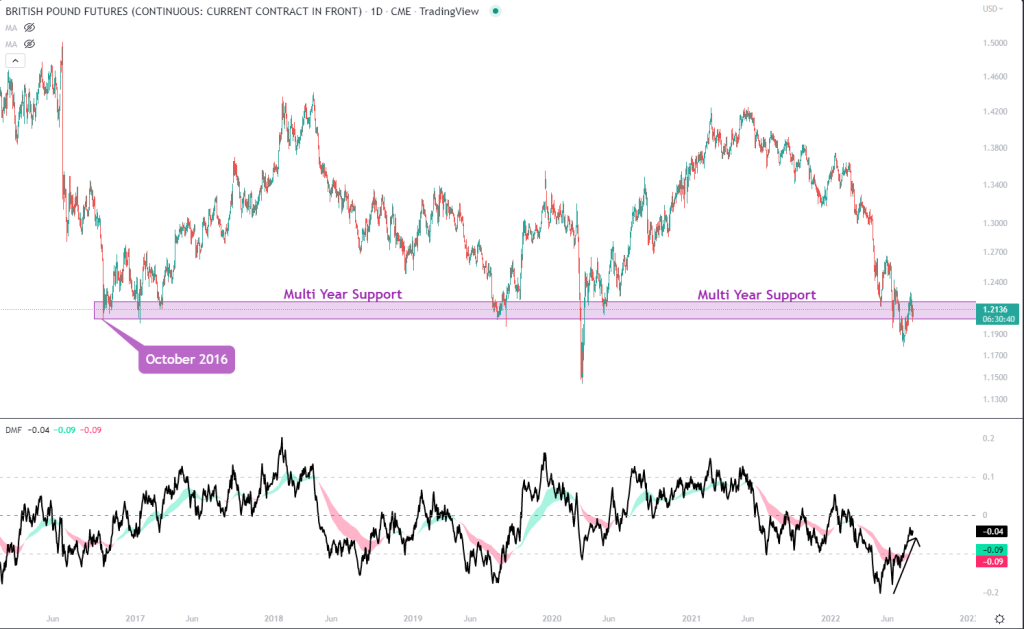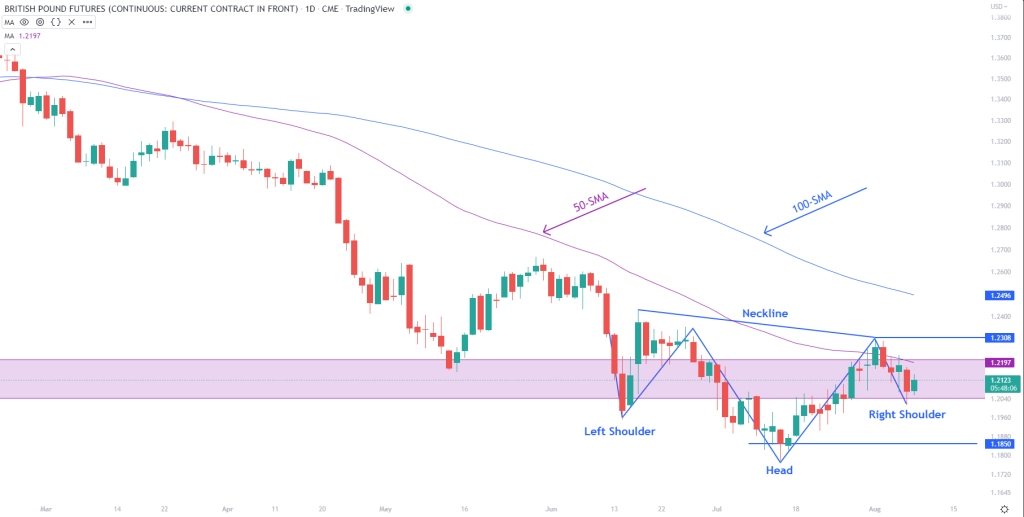- Britain will decide on its next Prime Minister in September.
- A new Prime Minister will adopt a different policy affecting pound futures.
- The BoE warned of a looming recession in the UK.
The battle for the position of the prime minister of Britain is entering its last stretch, and the decision in September will likely have a significant impact on the future of the British pound (6B).
Apparent policy differences have been at the center of the competition to succeed Boris Johnson between foreign minister Liz Truss and former finance minister Rishi Sunak. Insisting that his rival is pushing for unfunded tax cuts that will only increase price pressure, Sunak has vowed to curb inflation. Truss has stated that she wants to jump-start growth and that her planned tax cuts won’t cause inflation.
The economy might experience a brief boost if one or both candidates start cutting taxes, and the Bank of England (BoE) might feel pressure to continue raising rates to prevent further price pressures.
This year, the pound’s value against the dollar has fallen by 10%. Despite Thursday’s significant rate boost, the BoE has increased rates slower than the Federal Reserve.
Sterling should benefit from a BoE more determined to hike rates due to looser fiscal policy.
But the economy will play a more significant role in its long-term success. With an output decline of 2.1, the BoE recently issued a recessionary warning.
If, as Truss forecasts, lower taxes do not spur economic development, the sterling may suffer. Her suggestion to look into the BoE’s independence might also matter. Any increased government involvement in monetary policy would undermine public trust in the British economy.
British pound (6B) futures technical outlook:


The British Pound has not seen its top since the 24th of Feb 2021, with prices falling over 17% against the Dollar. The 50 SMA crossed below the 100 SMA 363 days ago, confirming the downtrend.
Traders who were short from that time could be well in the green by now. Technically, our daily chart shows the formation of an Inverse Head and shoulder pattern, which could mean a temporary relief rally in the short term.
The Pound needs to break above the Neckline at 1.2308 to confirm that a short-term rally is on the cards. This could lead to a test of the 100 SMA, where prices may consolidate before a new trend emerges. In addition, the Pound is on Multi-Year support stretching back to 2016; the support area has firmly held ever since.
On the other hand, it can be observed that the gap between the 50-SMA and 100-SMA is the widest its been since the bearish cross occurred. This may indicate that the 50-SMA could solidly hold its place below the 100-SMA, and lower prices could occur.
For the market to sell off further, we need to see a break below the Right Shoulder of the H&S pattern. The next immediate target after that is 1.1850, where we could expect some additional support from there. In addition, the FED continues to raise interest rates, further strengthening the Dollar versus the Pound, which continues to show on the 6B futures chart.


